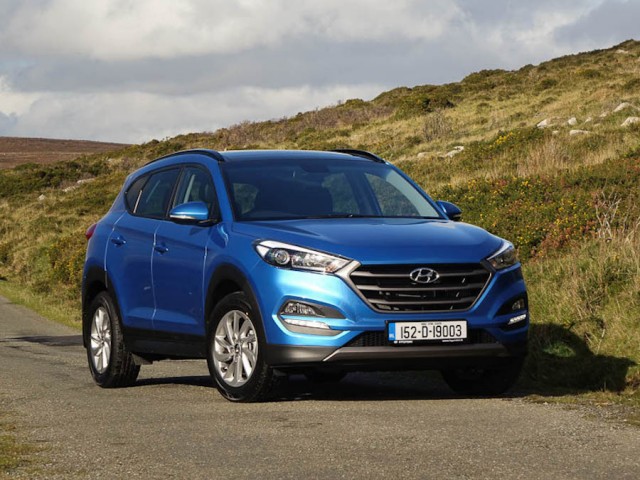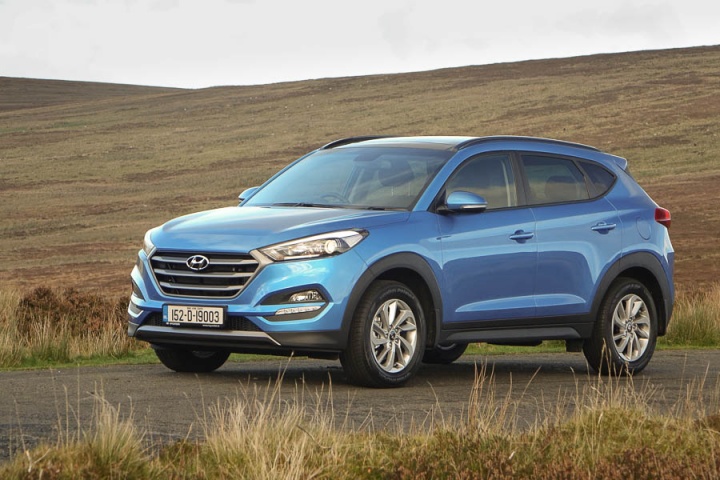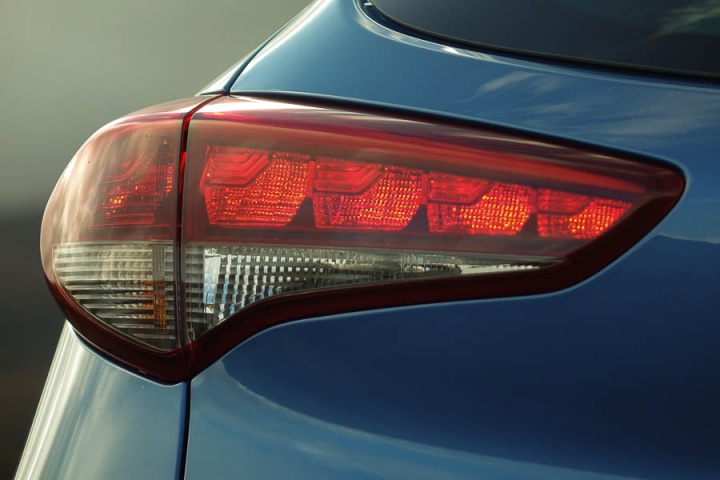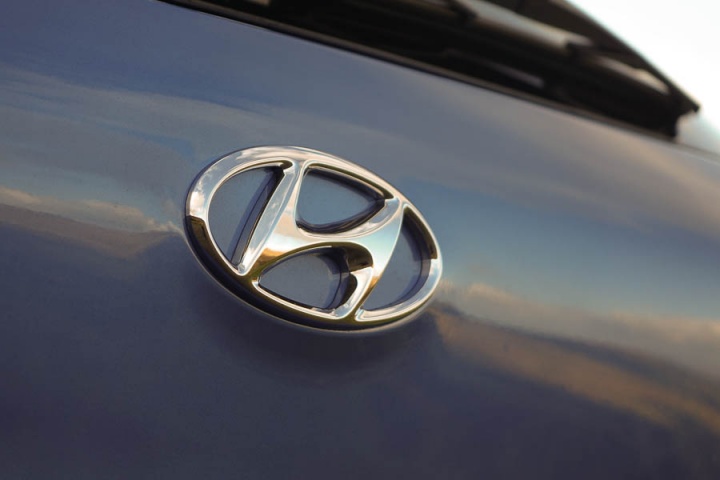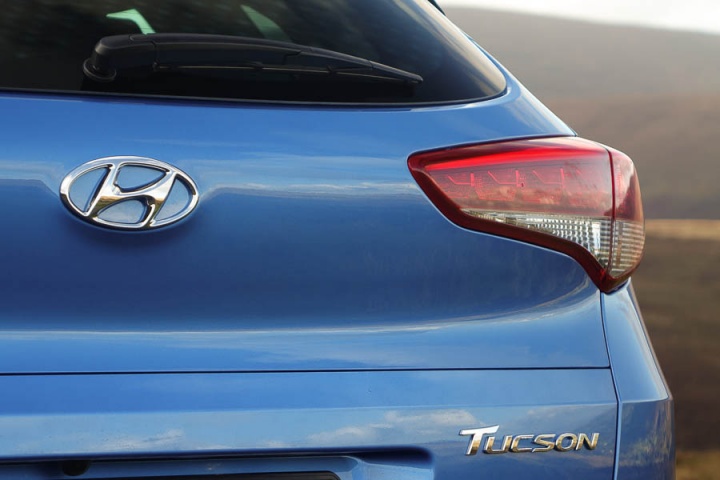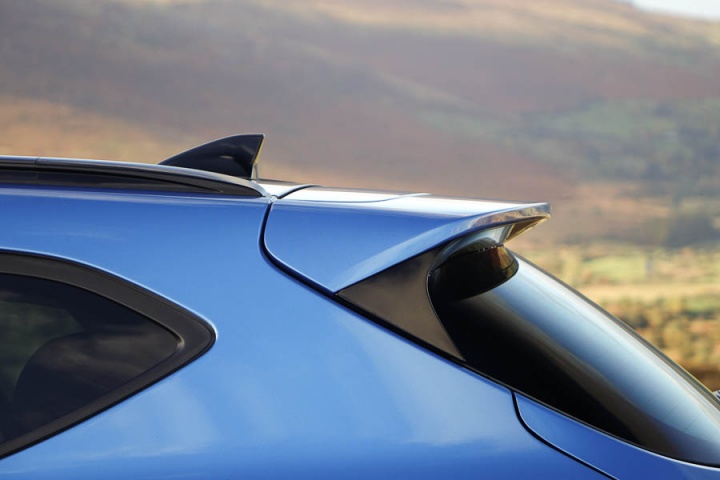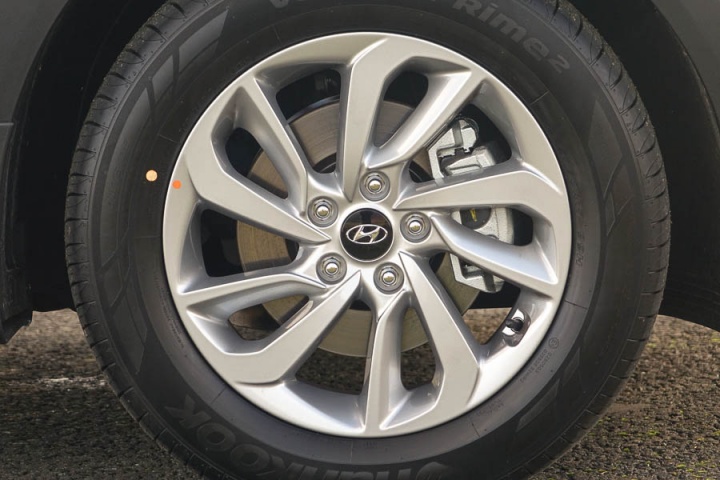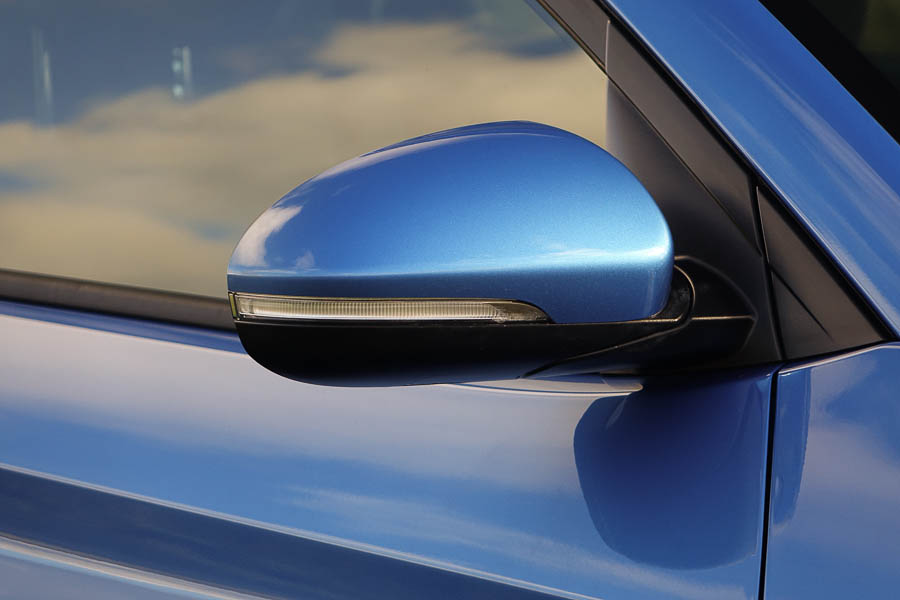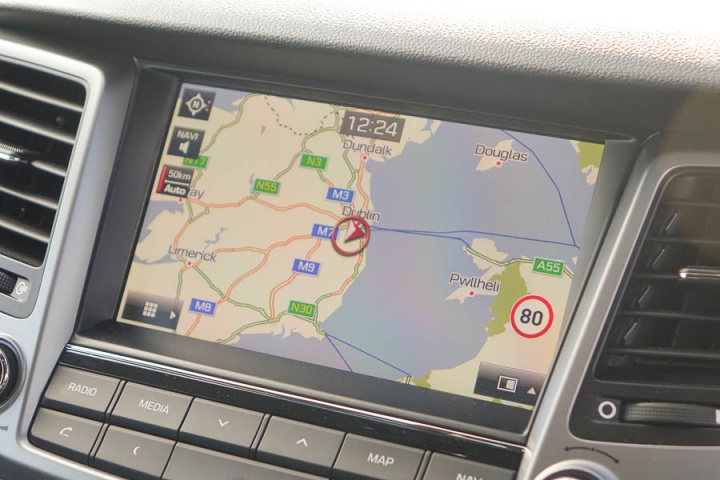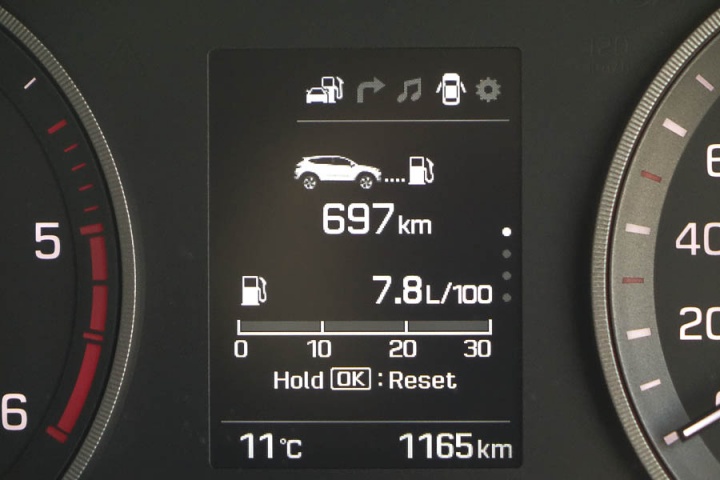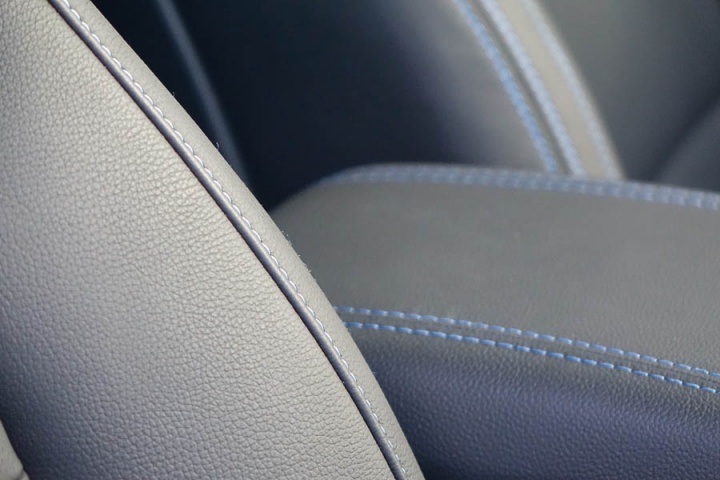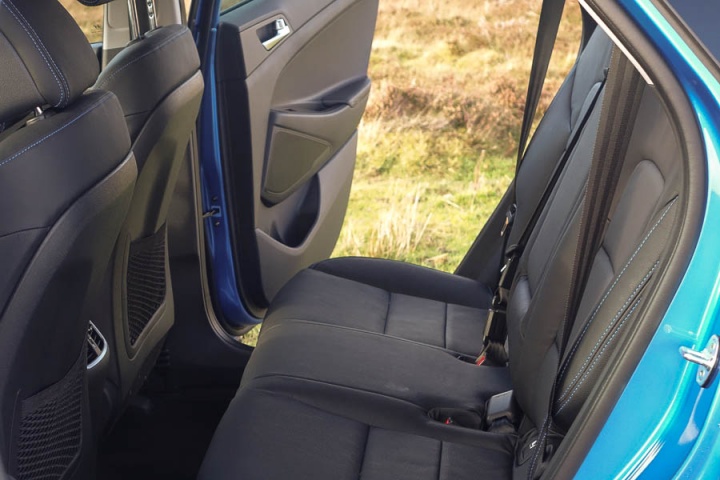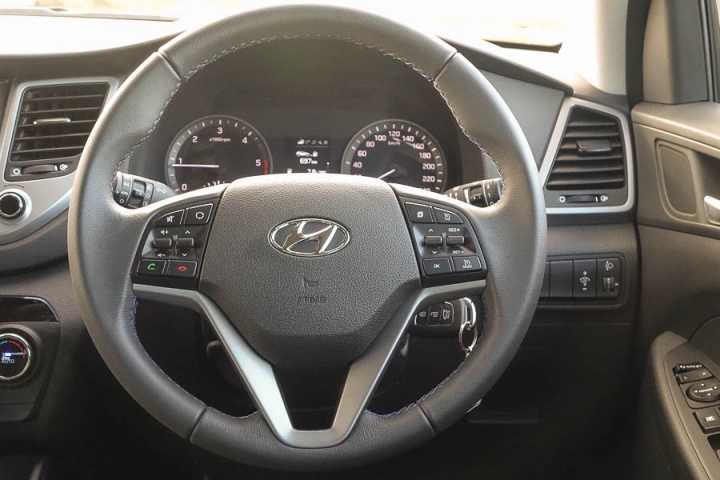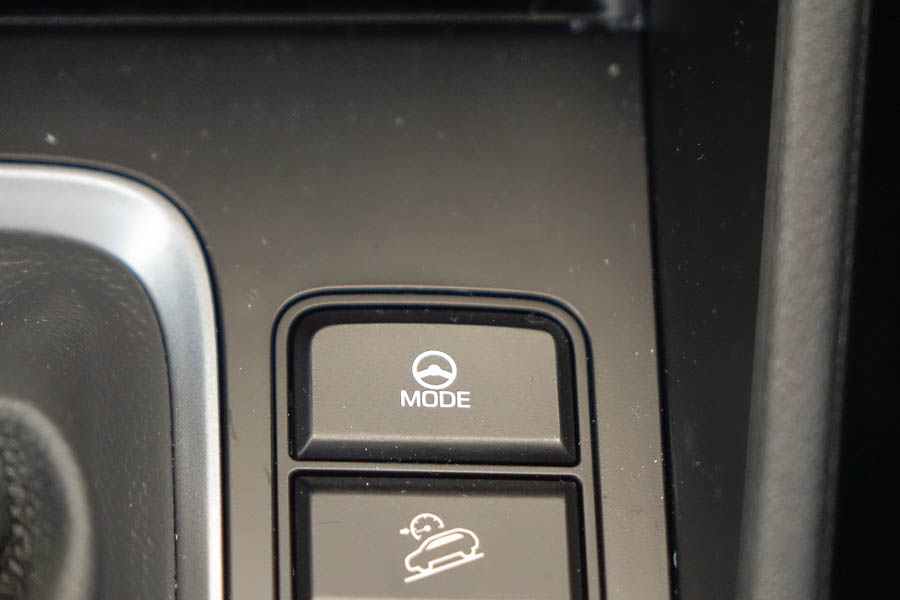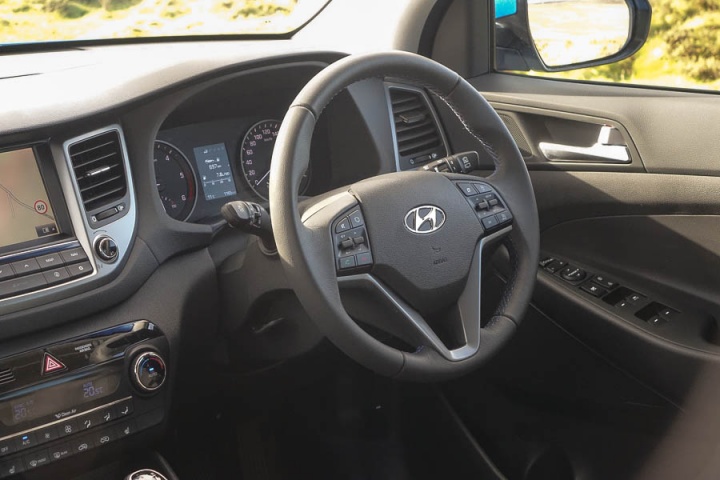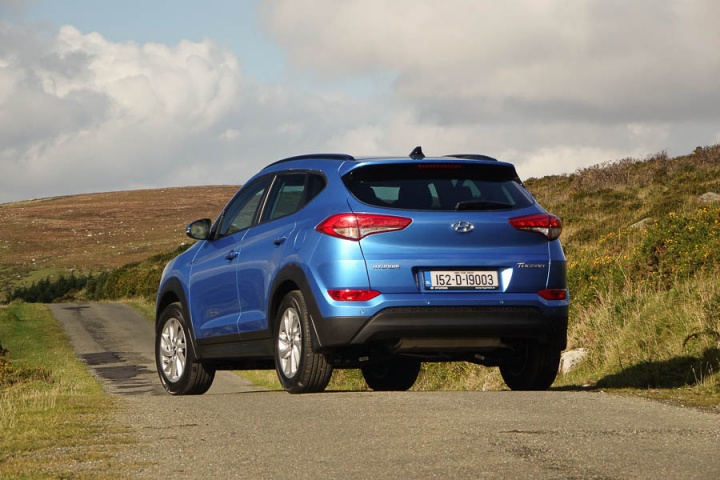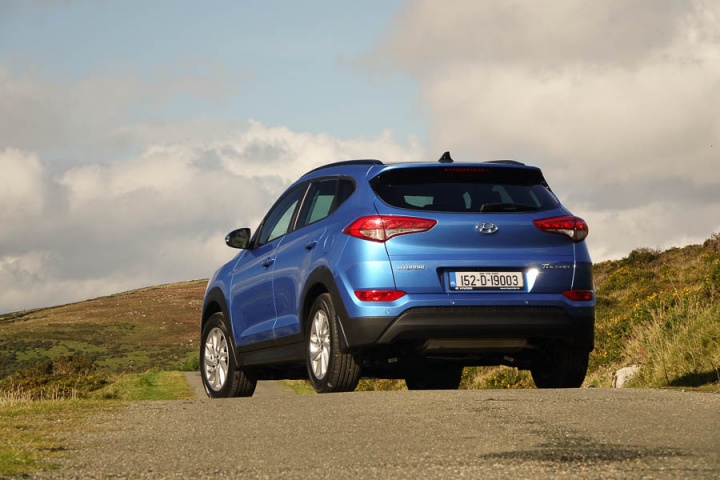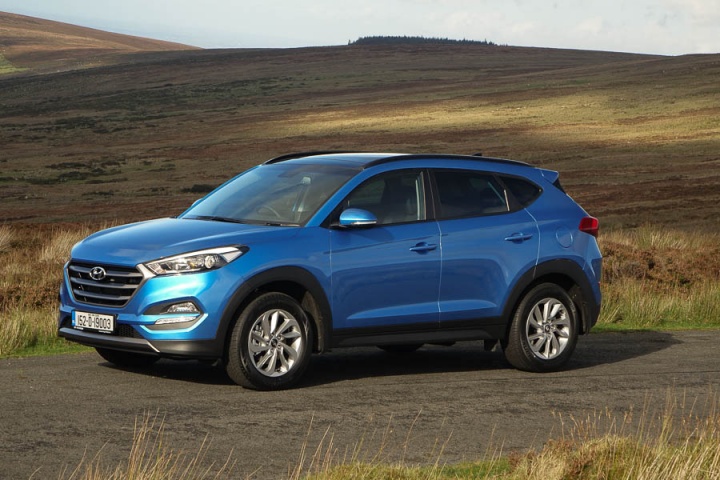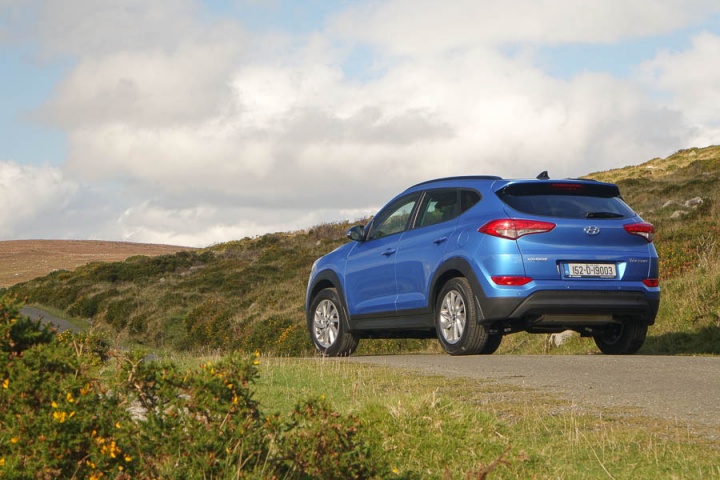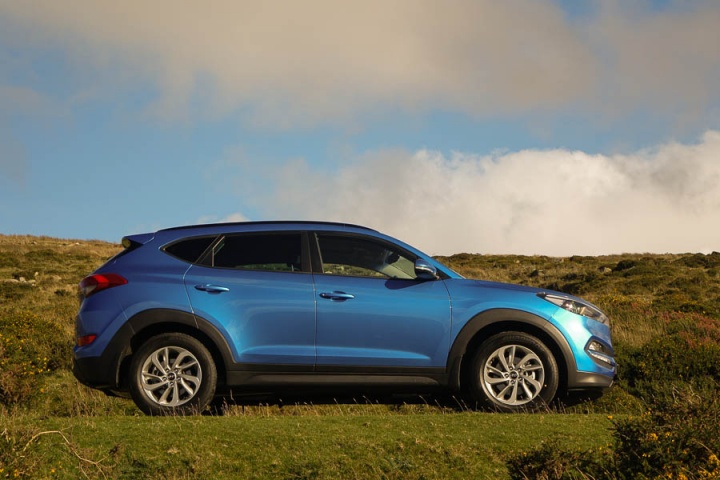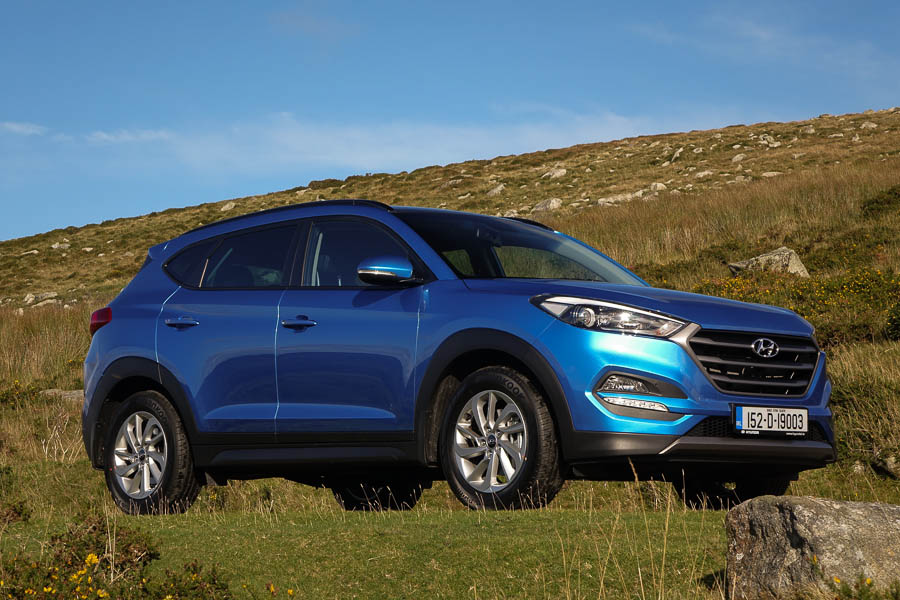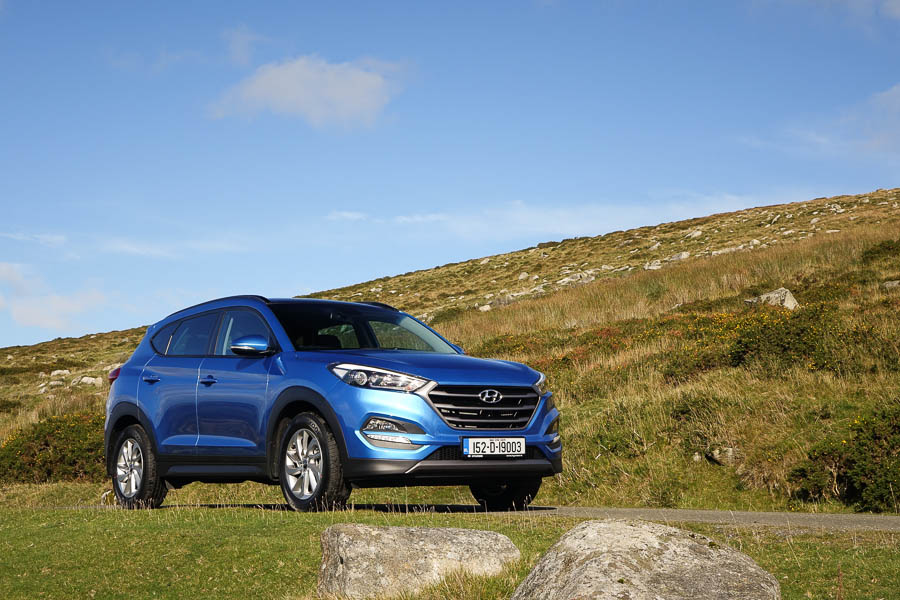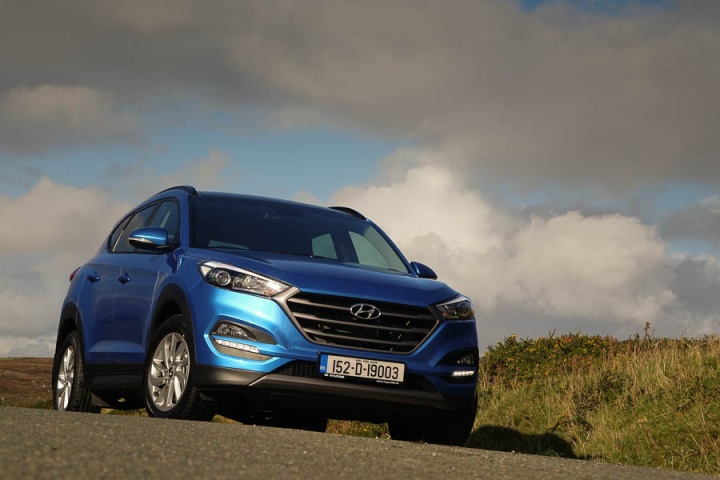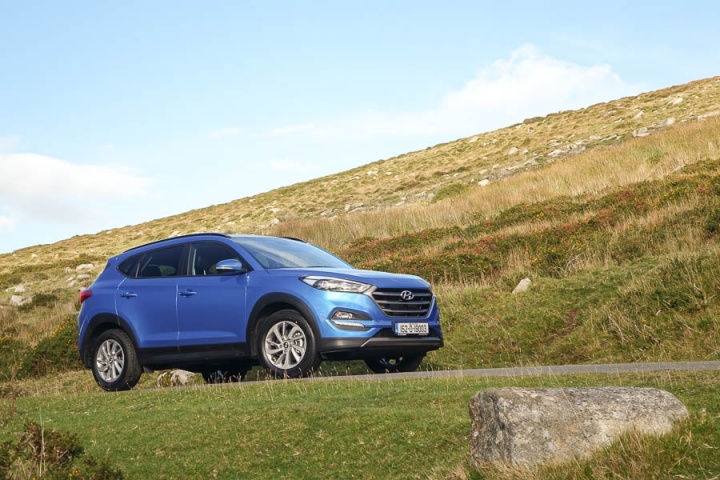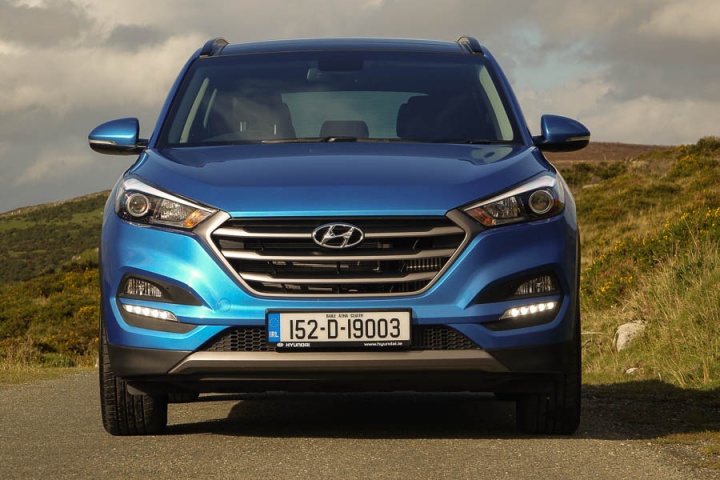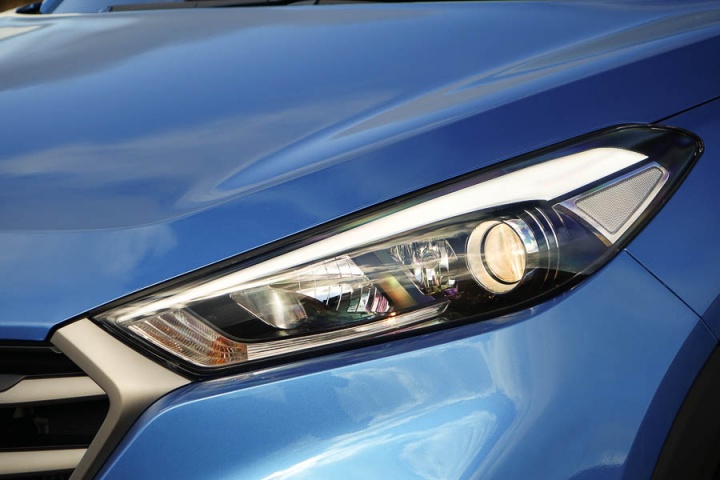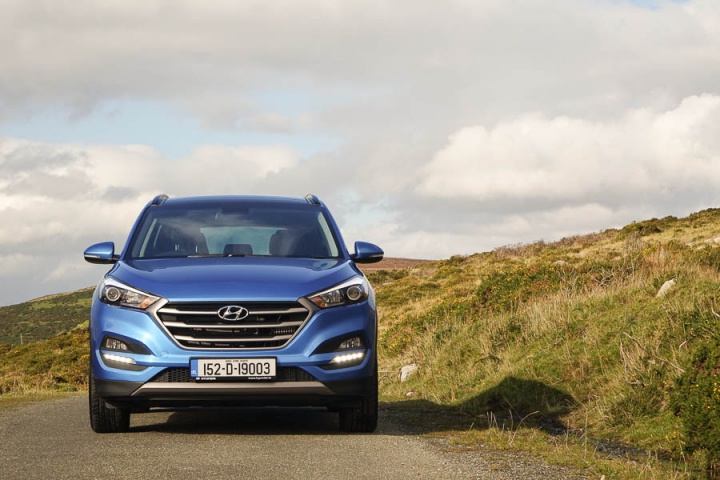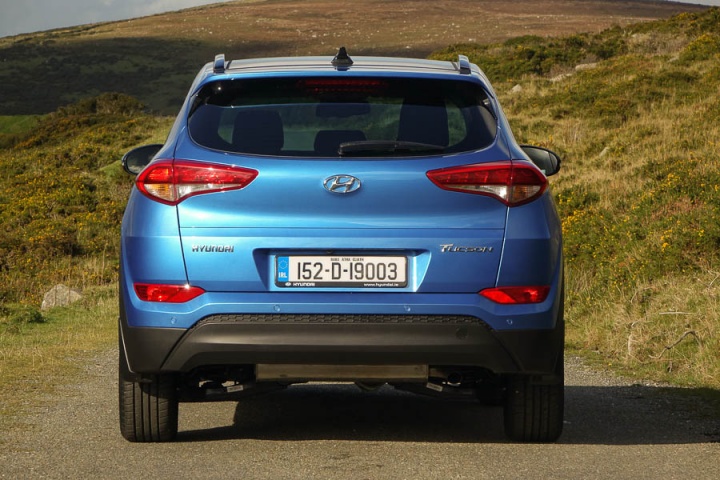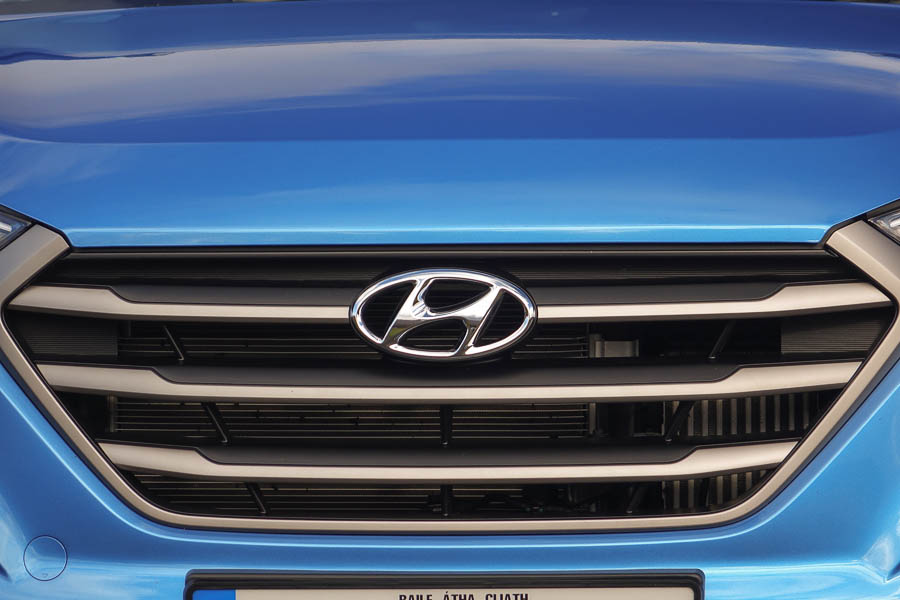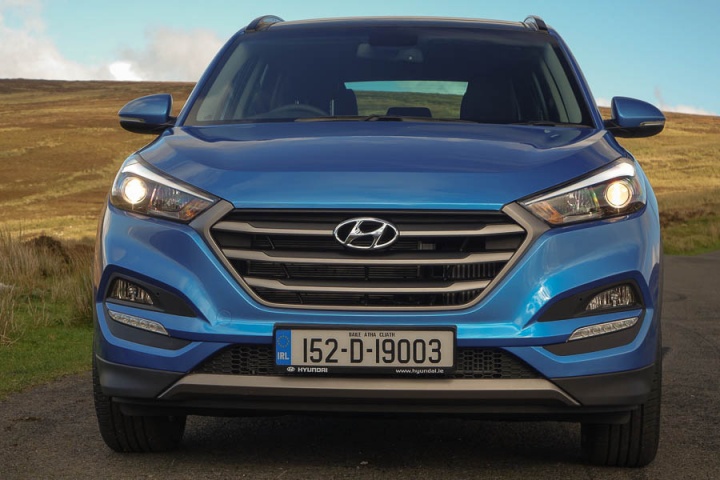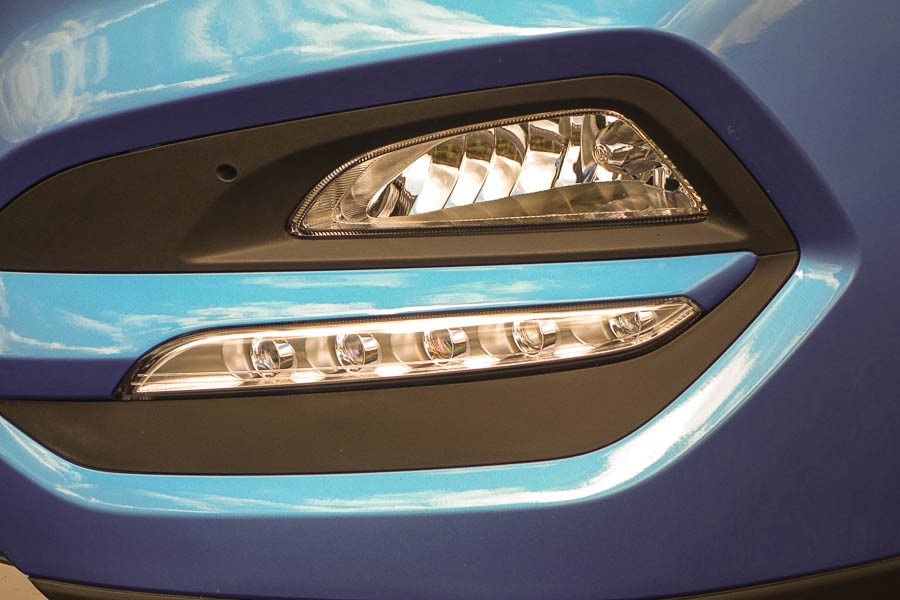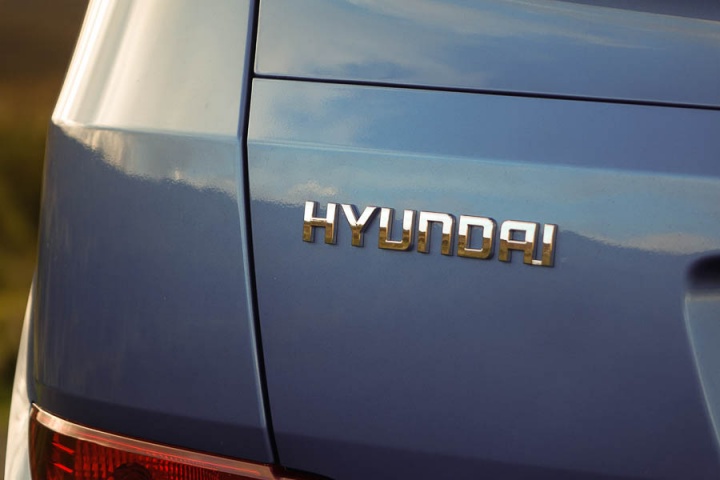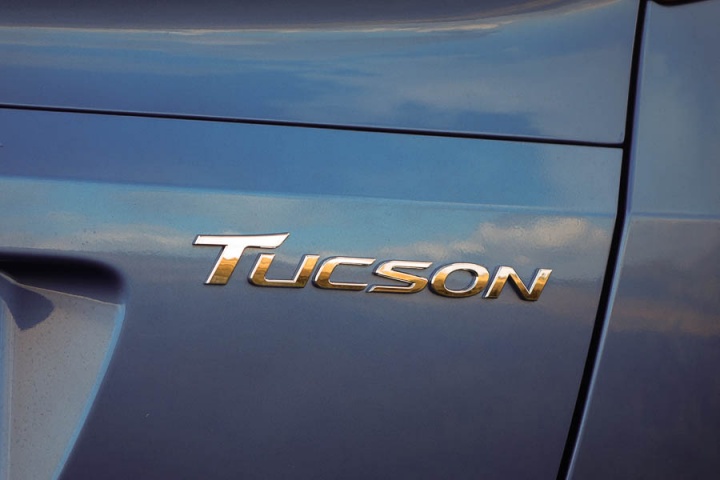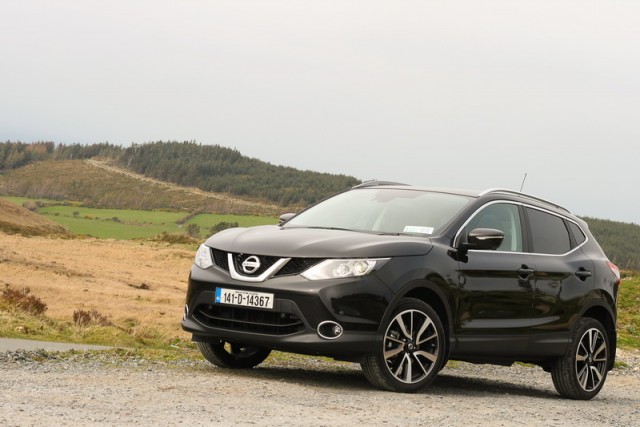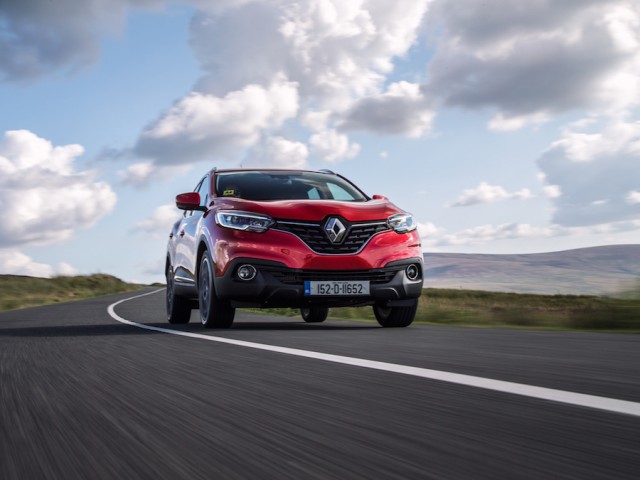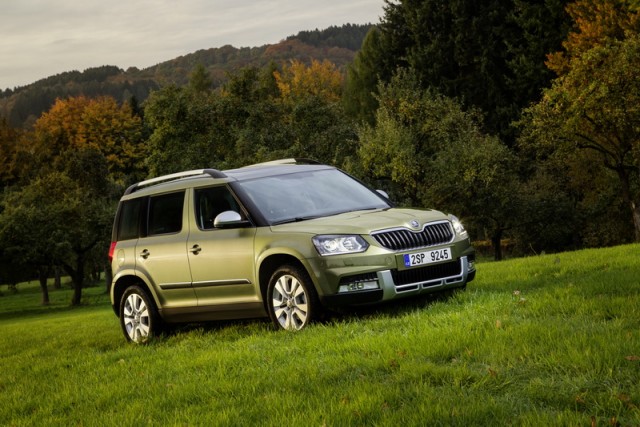Good: attractive, spacious, refined, very well-equipped
Not so good: no four-wheel drive option with 1.7-litre diesel engine
Gone are the days when new car buyers with €30,000 burning a hole in their pockets went for the default high-spec C-segment hatchback. The Volkswagen Golf and Ford Focus still sit atop the sales charts, but lurking in third spot is a car that has changed the motoring landscape forever, the Nissan Qashqai, arguably the first crossover and one of the most successful new nameplates of recent times. Knowing all this well, Hyundai Ireland, having sold plenty of ix35s, reckons its replacement, the Tucson reviewed here, has the measure of the Nissan Qashqai, enough to overtake it in the sales charts for 2016. Is it really that good?
First impressions are very respectable; the new Tucson is an attractive looking car, even on the smallest wheels it's sold with. A strong colour like 'Ara Blue' pictured here emphasises the style and though it's clearly from the same design school as its big brother, the Hyundai Santa Fe, it also has its own character, particularly from the rear. From that angle, the Tucson looks wide and low, as opposed to the tall and narrow appearance of its predecessor, the Hyundai ix35.
The cabin is even more successful; not only is it larger than its main rivals' - and of course, its precursor's - there has been a tangible step up in perceived quality. Sure, if you go looking, you'll still find some hard plastic, but it's not widespread, and the tactile switchgear makes up for it, as does the smart dashboard design. There's plenty of oddment space and rear seat passengers have loads of room to stretch out - relative to other crossovers at this price point in any case, and certainly way more than in the average C-segment hatch.
Our test car felt particularly plush thanks to (contrast stitched) leather upholstery and responsive touchscreen satnav, but in fact, this isn't even the top-of-the range model. It seems that Hyundai aims to give buyers a large amount of equipment as standard. The entry-level Tucson Comfort - priced at €25,245 with a 1.6-litre petrol engine (Hyundai quotes a 'starting from' finance cost of €241.62 for this model), or €26,995 powered by the same 1.7-litre diesel we review here - features 16-inch alloy wheels, air conditioning, Bluetooth, rear parking sensors, cruise control, auto lights, roof rails, LED daytime running lights, leather steering wheel and gear shifter, USB and aux-in ports and remote controls on the steering wheel.
For a grand more (assuming you're going for the diesel, which everyone will) gets you the Comfort Plus version, adding 17-inch alloys, automatic air conditioning, upgraded headlights, front fog lamps, electric folding door mirrors and loads of other detail enhancements inside and out. Hyundai Ireland reckons that the Tucson Executive reviewed here will be the best seller and for €29,995 it features all of the above, plus an eight-inch touchscreen with satnav, rear view camera, heated front seats and the leather upholstery mentioned earlier. A lot of car for the money. Apparently, these prices are part of an 'introductory offer', with increases due at the start of 2016. Even if they jump €750 or so we reckon the Tucson has the lead in terms of value in the sector.
It's a shame then that the 1.7-litre CRDi diesel engine cannot be specified with either four-wheel drive or an automatic transmission. Buyers must upgrade to the 2.0-litre diesel engine for either of those, with prices starting at €35,495. We suspect that a dual-clutch automatic will come on stream for the 1.7-litre engine in time, but there's no official launch date for that as yet so don't hold your breath waiting. The 1.7-litre unit itself is carried over from the Hyundai ix35 and though its vital stats (116hp, 280Nm, 0-100km/h in 13.7 seconds) make it sound rather puny, it never really feels as such on the open road. It's quieter than before and puts in a perfectly adequate performance. Obviously, if you plan on doing a lot of towing then go for the 2.0-litre model.
Either way, the Tucson's chassis is well developed. That quietened down engine is just one aspect of the ultra refined package and it's a joy to cruise on the motorway in this car. It's not the most engaging crossover in the world, but it's no worse than others in the class on that score. We could do without the three-mode steering, as it doesn't really enhance the experience, but perhaps it's what buyers want. Regardless, we reckon the new Hyundai Tucson will tick a lot of boxes for those in the market with about €30,000 to spend.

